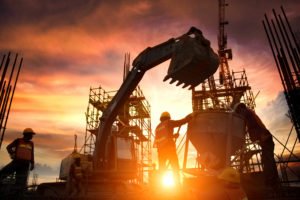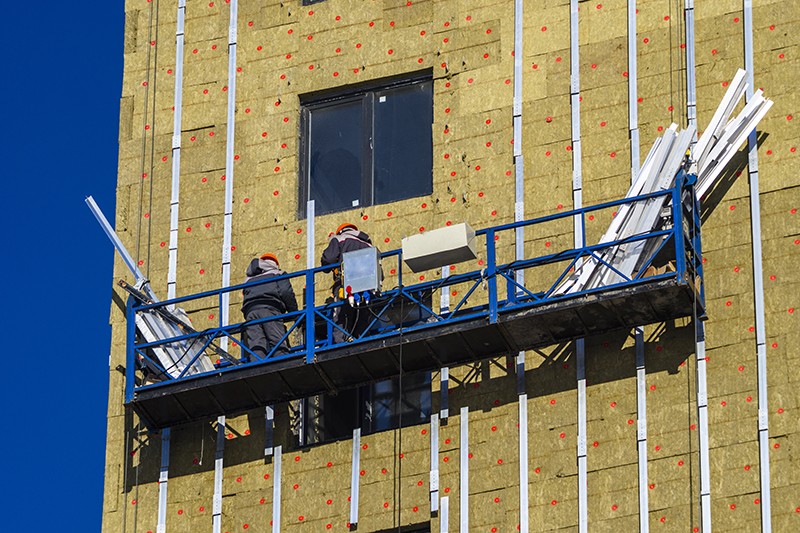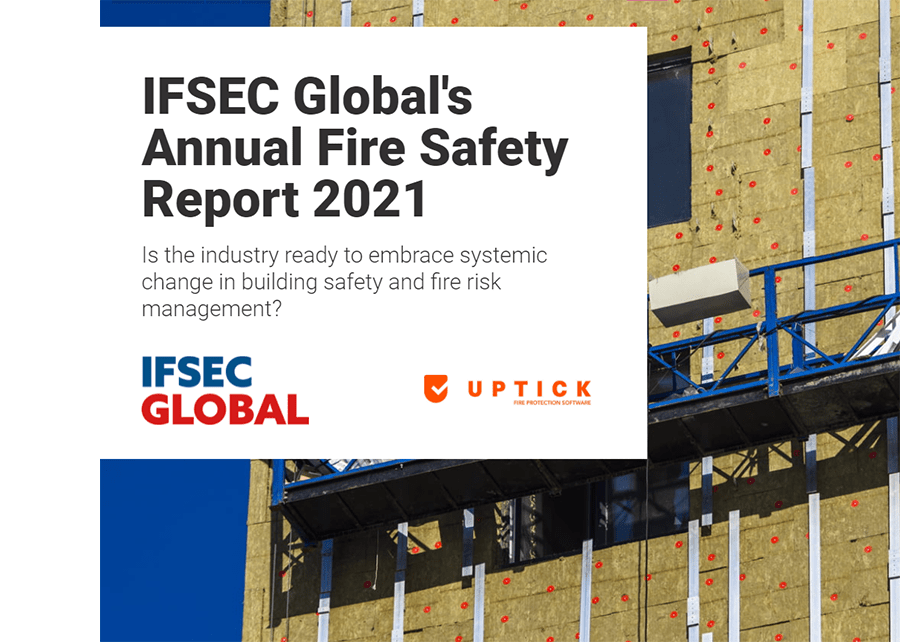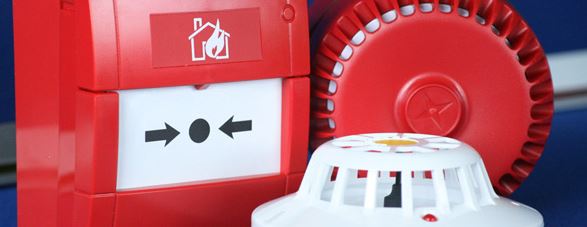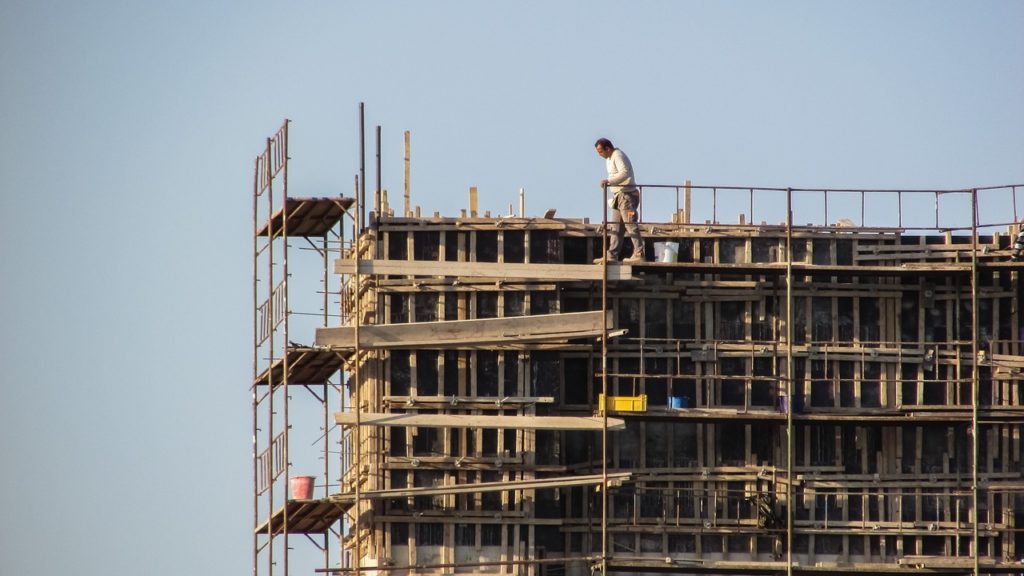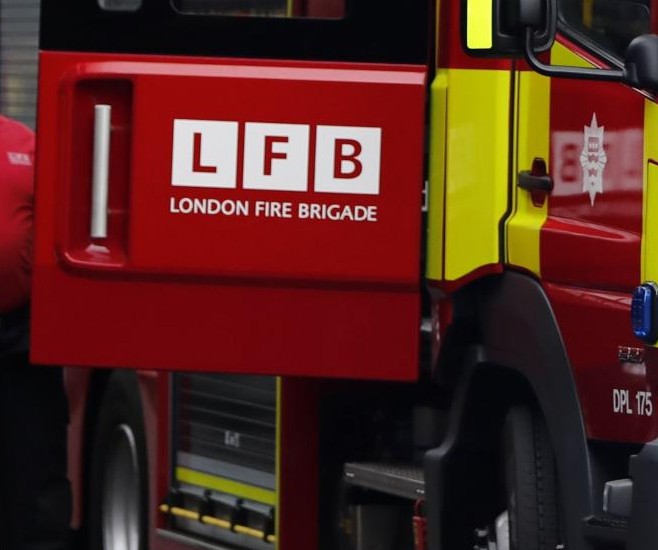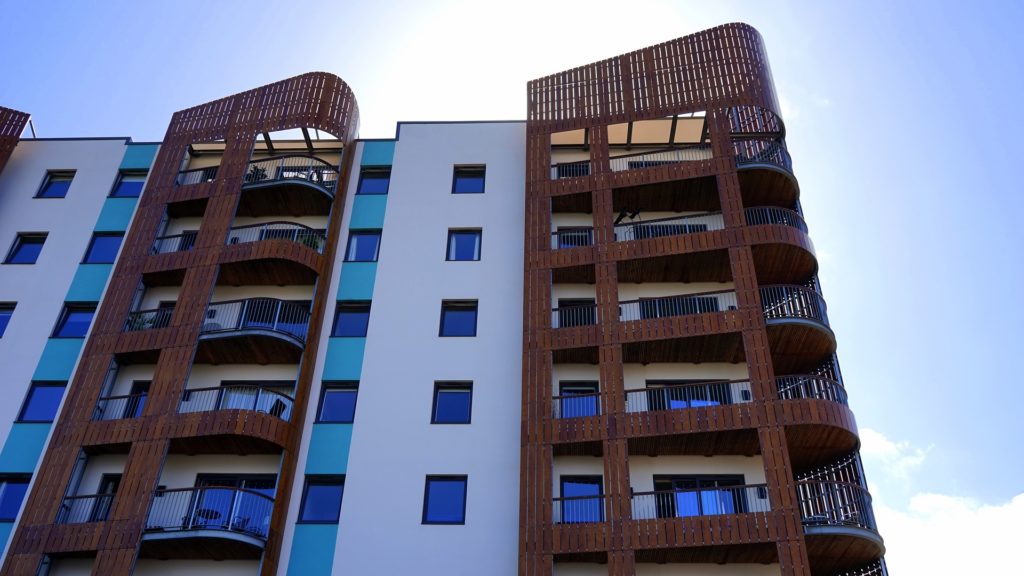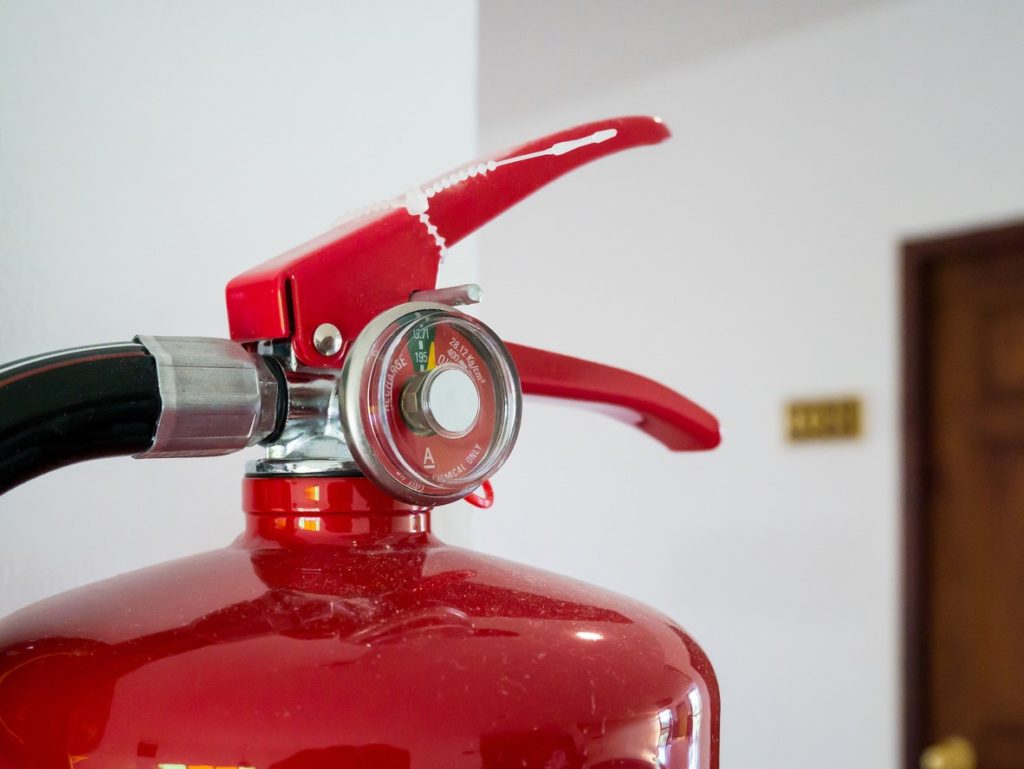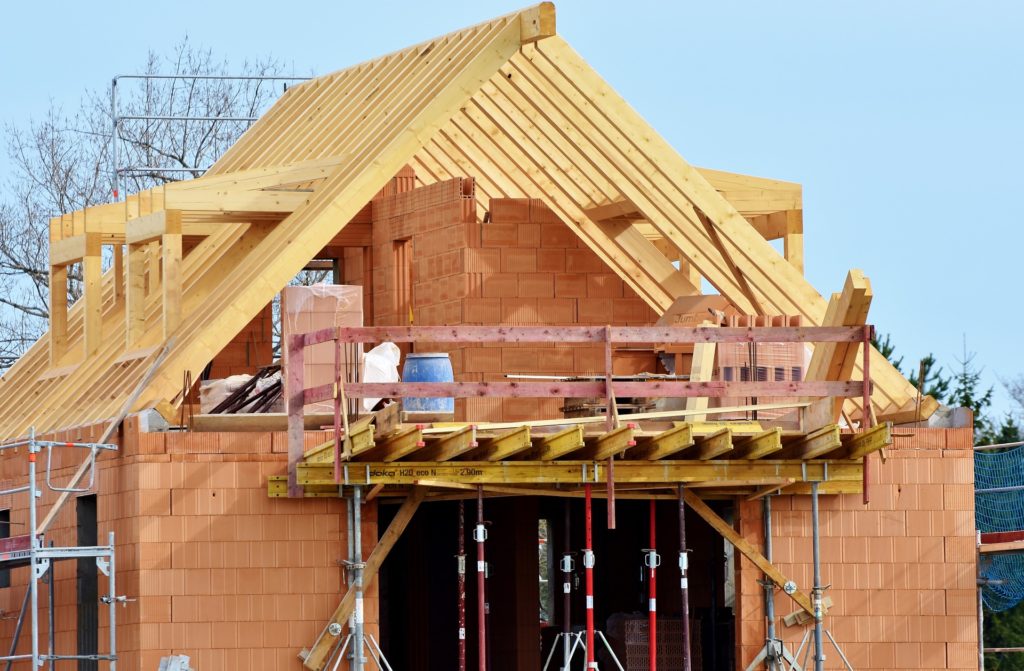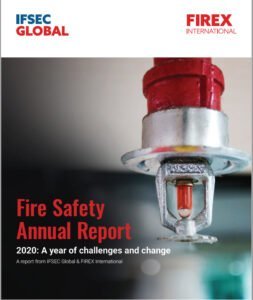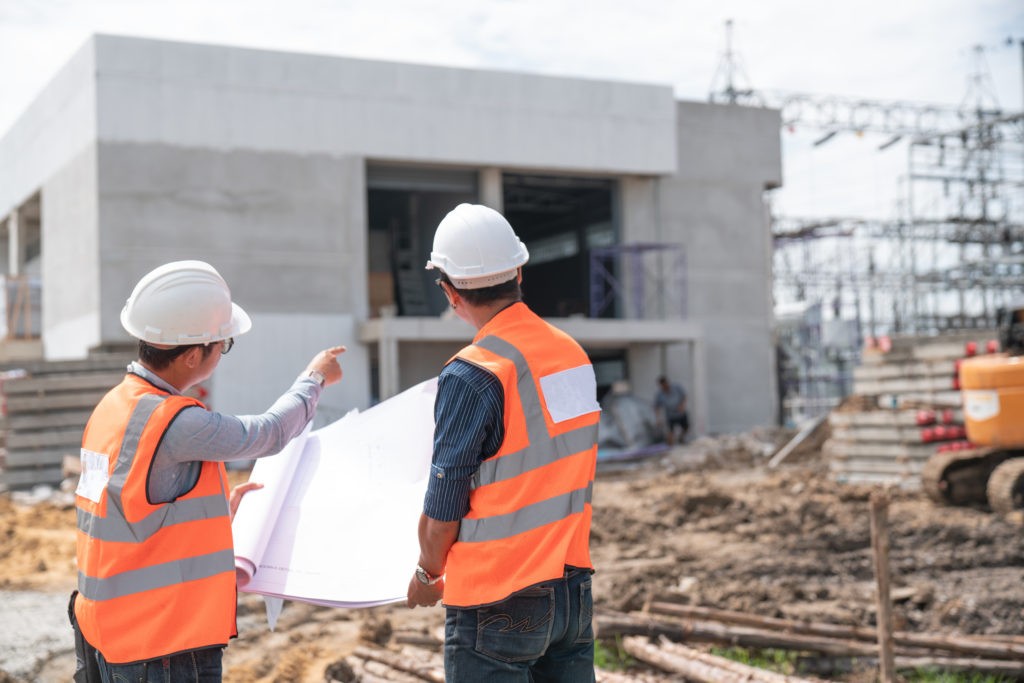The Building Safety Bill, which was first announced in draft form in July 2020, was published on 5 July 2021 and outlined by then-Housing Secretary Robert Jenrick as the next “key step in an extensive overhaul to building safety legislation”. The reforms are set to create “lasting generational change and a clear pathway for the future on how residential buildings should be constructed and maintained”, affirms the UK Government. The Bill received Royal Assent on 28 April 2022, and has now completed all the parliamentary stages in both Houses to become an Act of Parliament – The Building Safety Act.

Many of the measures included within the 252-page bill are likely to take between a year and 18 months to introduce, according to the Government.
The Government published a full transition plan for the Bill, here.
Read the full 218-page Building Safety Bill, here.
The Building Safety Bill is designed to give residents more power to hold builders and developers to account and toughen sanctions against those who threaten their safety, while a Building Safety Regulator will oversee the new regime and be responsible for ensuring that any building safety risks in new and existing high rise residential buildings of 18m and above (or of seven storeys or more) are effectively managed and resolved.
This will include implementing specific gateway points at design, construction and completion phases to ensure that safety is considered at each and every stage of a building’s construction, and safety risks are considered at the earliest stage of the planning process.
These changes will simplify the existing system to ensure high standards are continuously met, according to the Government, with a ‘golden thread’ of information created, stored and updated throughout the building’s lifecycle, establishing clear obligations on owners and enabling swift action to be taken by the regulator, wherever necessary.
The Bill also includes measures to prevent leaseholders from being responsible for the remediation costs of their building, with Michael Gove announcing plans to get developers and other industry stakeholders to pay for remediating defective buildings in January.
Originally, the Bill had included the compulsory appointment of a Building Safety Manager by building owners, but this proposal was removed in March, in order to protect leaseholders from further costs.
The latest on the Building Safety Bill
The Bill has passed the committee stage after examination in the House of Commons, where its proposals came under detailed consideration. The Report Stage, where MPs will be given the opportunity to propose further amendments, is expected to take place on the 19th January 2022.
The Bill passed Royal Assent on 28 April 20222, and will apply to both current and future buildings deemed to be ‘high-risk’.
What will the Building Safety Regulator do?
The new Building Safety Regulator will be at the heart of the reforms. Housed in the Health and Safety Executive (HSE), it will be responsible for overseeing the “safety and performance of all buildings”.
The three broad functions of the Building Safety Regulator will be to:
- “Implement the new, more stringent regulatory regime for higher-risk buildings”
- “Oversee the safety and performance of all buildings”
- “Assist and encourage competence among the built environment industry, and registered building inspectors.
Housing Secretary (at the time of the Bill’s launch) Rt Hon Robert Jenrick MP said: “This Bill will ensure high standards of safety for people’s homes, and in particular for high rise buildings, with a new regulator providing essential oversight at every stage of a building’s lifecycle, from design, construction, completion to occupation.
“The new building safety regime will be a proportionate one, ensuring those buildings requiring remediation are brought to an acceptable standard of safety swiftly, and reassuring the vast majority of residents and leaseholders in those buildings that their homes are safe.”
The reforms will seek to tackle bad practice head on, building on Dame Judith Hackitt’s review of Building Regulations and Fire Safety, which highlighted a need for significant cultural and regulatory change.
Under the proposals, the Government is more than doubling the amount of time, from six to fifteen years, that residents can seek compensation for sub-standard construction work. Announced shortly before the Bill’s publication, leaseholders and Labour have argued that this change is likely to bring “little relief”, due to the costly and time-consuming barriers to mount legal action, while many developers that may have fallen under the scope no longer exist for leaseholders to take action against.
The changes will apply retrospectively. This means that residents of a building completed in 2010 would be able to bring proceedings against the developer until 2025.
These reforms also include new measures which apply to those seeking compensation for shoddy refurbishments which make the home unliveable.
These factsheets give details about the HSE’s early position on the regulatory approach of the Building Safety Regulator. The factsheets include:
Recovering the Costs of the Building Safety Regulator
This factsheet reflects HSE’s current thinking on the Building Safety Regulator’s cost recovery regime, including how it will link to the building safety charge. To inform Parliamentary scrutiny of the Bill, the government has published an early, indicative draft of the Building Safety (Fees) Regulations. These regulations, together with a detailed ‘charging scheme’, will establish the cost recovery regime and define the actual levels of fees and charges payable and by whom.
All such details remain subject to the Bill’s parliamentary passage and Royal Assent – and thereafter, to full public consultation on the proposed fees regulations and charging scheme.
Regulating the Risk to People from the Spread of Fire and Structural Failure in Occupied High-rise Buildings
The framework for effective and proportionate regulatory decision-making by the Building Safety Regulator is being developed as part of the programme to establish it in HSE. The remit of the Building Safety Regulator and its powers and functions may change as the Bill passes through Parliament. This factsheet therefore represents an early position in the development of the Building Safety Regulator’s regulatory approach regarding occupied high-rise residential buildings in England to help inform debate over the coming months.
New and Refurbished High-rise Buildings
This factsheet represents an early position in the development of the Building Safety Regulator’s regulatory approach as the building control authority in England for high-rise buildings.
Read the Government’s Building Safety Bill factsheets, here.
Who does Building Safety Bill apply to?
The provisions set out in the Building Safety Bill will apply to building owners and the built environment industry, such as those who commission building work and who participate in the design and construction process, including clients, designers and contractors.
The Bill creates powers to introduce new design and construction requirements that apply to high-rise residential buildings, hospitals, and care homes of at least 18 metres or at least seven storeys. The Bill also introduces new occupation requirements for existing and new high-rise residential buildings of 18 metres and above (or at least seven storeys).
Those involved in the commissioning, design, construction, or refurbishment of high-rise residential and other in scope buildings will have new formal responsibilities to comply with building regulations.
Powers within the Building Safety Bill will be used to make regulations that place duties on those who procure, plan, manage and undertake building work. These regulations will be made using secondary legislation and will be subject to consultation once the Building Safety Bill has gained Royal Assent.
What does Building Safety Bill mean?
The Building Safety Bill contains six parts and nine schedules addressing a range of issues relating to building safety and standards. The Bill makes a number of changes to existing legislation, most notably the Building Act 1984.
Some of the key provisions of the Bill include the following:
New Building Safety Regulator
The Health and Safety Executive (HSE) is established as the Building Safety Regulator, to underpin the key regulatory reforms in the new building safety regime. Headed up by Peter Baker and housed in the HSE, it will be responsible for overseeing the “safety and performance of all buildings,” ensuring that any building safety risks in new and existing high rise residential buildings of 18m and above are effectively managed and resolved, taking cost into account.
This will include implementing specific gateway points at design, construction and completion phases to ensure that safety is considered at each and every stage of a building’s construction, and safety risks are considered at the earliest stage of the planning process.
These changes will simplify the existing system to ensure high standards are continuously met, with a ‘golden thread’ of information created, stored and updated throughout the building’s lifecycle, establishing clear obligations on owners and enabling swift action to be taken by the regulator, wherever necessary.
The Government has published a full transition plan for the Bill, here.
Read the Government’s explainer on the Building Safety Bill, here.
Peter Baker, Chief Inspector of Buildings at HSE, welcomed the Bill’s introduction. He said it “will give HSE the tools to deliver its important role as the Building Safety Regulator and is an important step in setting out what will be expected of future duty holders.
“Everyone involved in higher risk buildings from design, construction and day-to-day operations will manage and control building safety in a way that is proportionate to the risks. This will ensure these buildings are safer for those who live in them and they have a stronger voice. I encourage duty holders to use the Bill’s introduction in preparation for the new, more rigorous regulatory regime.
“The Building Safety Regulator will continue to work with industry and others to deliver the new building safety regime to ensure that residents of higher risk buildings are safe, and feel safe, in their homes now and in the future.”
Earlier this year, SHP’s sister title, IFSEC Global, spoke to Peter Baker about his plans for the role. You can read that interview, here.
The Building Safety Regulator will have two objectives focused on securing the safety of people in and around buildings and improving building standards. It will also regulate in line with best practice principles including being proportionate, transparent, and targeting its activity at cases where action is needed.
The Building Safety Regulator has three core functions. These are:
- Implementing a new, more stringent regulatory regime for higher-risk buildings. This means being the building control authority in England in respect of building work on higher-risk buildings and overseeing and enforcing the new regime in occupation for higher-risk buildings. The Building Safety Regulator will have powers necessary to involve other teams including Fire and Rescue Services to assist it in making regulatory decisions.
- Overseeing the safety and performance of all buildings. This has two key aspects:
- Overseeing the performance of the building control sector. This will involve developing key performance indicators (KPIs) related to building control work, data collection and powers to impose sanctions for poor performance.
- Understanding and advising on existing and emerging building standards and safety risks including advising on changes to regulations.
- Assisting and encouraging competence among the built environment industry and registered building inspectors.
The Building Safety Regulator will be responsible for all regulatory decisions under the new regime during the design, construction, occupation, and refurbishment of higher-risk buildings.
The Bill provides the Building Safety Regulator with the power to establish and maintain committees to advise on building functions.
Dutyholders
The Bill allows for a new dutyholder regime to be incorporated across the lifecycle of higher-risk buildings. This is based on the principle that the person or entity that creates a building safety risk should, as far as possible, be responsible for managing that risk. Many aspects of the regime will be taken forward through secondary legislation.
When buildings are designed, constructed or refurbished, those involved in the commissioning, design, construction or refurbishment process will have formal responsibilities for compliance with building regulations. These provisions will apply to all work to which building regulations apply, and these dutyholders will include those appointed under the Construction (Design and Management) Regulations 2015 (CDM 2015). The main dutyholder roles under CDM 2015 are:
- Client – Any person or organisation for whom a construction project is carried out, including as part of their business.
- Principal Designer – Appointed by the Client under CDM 2015, when there is more than one contractor working on the building project. Role is to plan, manage, monitor and coordinate the pre-construction phase, when most design work is carried out. The Principal Designer is in control of the pre-construction phase.
- Principal Contractor – Appointed by the Client under CDM 2015, when there is more than one contractor working on the building project. Role is to plan, manage, monitor and co-ordinate the construction phase. The Principal Contractor is in control of the construction phase.
- Designer – Carries on a trade, business or other undertaking in connection with which they prepare or modify a design or instruct any person under their control to prepare or modify a design.
- Contractor – Manages or controls construction work (e.g. building, altering, maintaining or demolishing a building or structure). Anyone who manages this work or directly employs or engages construction workers is a contractor.
Dutyholder roles may be fulfilled by either an individual or an organisation/legal entity. A dutyholder can hold more than one role in a building project.
Read the Government’s Dutyholders fact sheet.
Gateways
The amendments to the Building Act 1984 in this Bill, coupled with existing powers both in the Building Act 1984 and in other legislation, will allow for the creation of a new Gateway regime. The aim is to ensure that building safety risks are considered at each stage of a new higher-risk building’s design and construction. In summary:
- Gateway one: Planning Gateway one will introduce a number of new requirements in the planning system. This will ensure fire safety matters as they relate to land use planning are incorporated at the planning stage for schemes involving a high-rise residential building. Planning Gateway one will:
- Involve the HSE becoming a statutory consultee before permission is granted for development which involves or is likely to involve a high-rise residential building in certain circumstances.
- Require relevant applications for planning permission to include a fire statement to ensure applicants have considered fire safety issues as they relate to land use planning matters (for instance layout and access).
- Help inform effective decision-making by local planning.
- Gateway two requires the Building Safety Regulator to be satisfied that a building’s design meets the functional requirements of the Building Regulations. Construction duty holders will need to submit critical information to the Building Safety Regulator to demonstrate how the building, once built, will comply with the requirements of Building Regulations.
- Gateway three is equivalent to the current completion/final certificate phase. Gateway three begins when construction of the building is completed, and the building control body assesses whether the work has been carried out in accordance with the Building Regulations. All ‘golden thread’ documents and information on the final, as-built building must be submitted to the Building Safety Regulator. Gateway three is a ‘hard stop’ where the Building Safety Regulator will assess the application against applicable requirements of the building regulations, undertake final inspections of the completed building work, and issue a completion certificate on approval.
Golden thread
The Bill includes provisions to require the creation and maintenance of a golden thread of information. The intention is to ensure that the right people have the right information at the right time to ensure buildings are safe and building safety risks are managed throughout the building’s lifecycle.
Accountable Person
An Accountable Person is defined as the dutyholder of a building during its occupation (after the building has passed Gateway three). This could be an individual, a partnership or corporate body. An Accountable Person’s responsibilities include:
- Registering a building with the Building Safety Regulator.
- Applying for a Building Assessment Certificate, which is issued when the Building Safety Regulator is satisfied the Accountable Person is complying with their duties under the Bill.
- Assessing (and revising as necessary) building safety risks and taking all reasonable steps to prevent the occurrence, and control the impact of, a major incident arising from building safety risks in or around the building.
- Preparing (and revising as necessary) a Safety Case Report for a building which contains their assessment of the building safety risks and the steps that have been taken to prevent a major incident.
- Keeping information on a building and ensuring it is up to date.
- Reviewing the risk assessments on which their arrangements for managing building safety risks and Safety Case Report are based.
Duty to manage risks and safety cases
The Bill creates an ongoing duty on the Accountable Person to assess the building safety risks relating to their building, to take all reasonable steps to prevent a building safety risk materialising, and to limit the severity of any incident resulting from such a risk. Building Safety risks are defined in the Bill as risks to the safety of persons in or about buildings resulting from the occurrence of fire spread, structural failure and any other risk that may be prescribed by regulations in the future.
The Accountable Person will need to demonstrate how they are meeting this ongoing duty via their safety case and Safety Case Report, which they will be required to keep up to date. The safety case comprises the full body of evidence relating to the assessments and ongoing management of building safety risks.
The Accountable Person will be required to submit the building’s Safety Case Report to the Building Safety Regulator as part of the process for issuing a Building Assessment Certificate or on request from the Building Safety Regulator. A key part of the report will be the overview of the Accountable Person’s safety management system (SMS), which explains the policies, procedures and processes they have in place across the organisation to deliver continuous management of building safety risks.
The Safety Case Report should set out the building safety risks in the building and how these are being managed on an on-going basis, to ensure resident safety.
Building control reform
The Building Safety Regulator will be required to establish and maintain a register of building inspectors (individuals) and building control approvers (either organisations or individuals).
Individuals and organisations currently known as ‘Approved Inspectors’ who wish to continue undertaking building control work will need to register as ‘building control approvers’.
The role of a registered building inspector being introduced through this Bill is new. A registered building inspector will be able to provide advice to local authorities or registered building control approvers overseeing building work.
The Building Safety Regulator will be the building control body for higher-risk buildings.
Strengthened Fire Safety Order
The Bill includes provisions to strengthen the Fire Safety Order in order to support greater compliance and effective enforcement. The amendments will require that:
- The Responsible Person must record their fire risk assessment.
- The Responsible Person must not appoint a person to assist them with making or reviewing a fire risk assessment unless that person is competent.
- The Responsible Person must record their fire safety arrangements.
- For buildings consisting of two or more sets of domestic premises, the Responsible Person(s) must provide specific fire safety information to residents about relevant fire safety matters, and must keep records of the relevant fire safety matters.
- The Responsible Person must take reasonable steps to identify themselves to all other Responsible Persons in the same premises, inform them of their name and UK address and the part of the premises they consider themselves to be Responsible Person for and keep a record of that information.
- Departing Responsible Persons must provide specific relevant fire safety information they hold to incoming Responsible Persons for premises or parts of premises for which they are responsible, keeping records of the fire safety information.
- For higher-risk buildings in England, the Responsible Person must identify and co-operate with Accountable Persons in the same premises to enable them to carry out their duties under the Building Safety Bill.
- Increased financial penalties of unlimited fines apply for the criminal offences of impersonating an inspector, failing to comply with any requirements imposed by an inspector, and failing to comply with requirements relating to the installation of luminous tube signs.
- Article 50 of the FSO (recently amended by the Fire Safety Act 2021) which relates to the provision of guidance for Responsible Persons, be amended to expressly provide that the Court may take compliance or non-compliance with such guidance into account when considering offences of breach of the Order.
Other provisions
The Bill includes and creates other provisions in relation to:
- Construction products: for example, the Bill creates powers to make provision for regulation of all construction products placed on the UK market, and creates the concept of a “safety critical product”.
- Improving the competence of architects.
- Removal of the democratic filter.
- New Homes Ombudsman scheme.
Building Safety Bill: What’s changed?
The Building Safety Bill takes forward the government’s commitment to fundamental reform of the building safety system. The Bill gives effect to policies set out in the Building a Safer Future consultation response, published in April 2020.
The objectives of the Building Safety Bill are to learn lessons from the 2017 Grenfell Tower fire and to remedy the systemic issues identified by Dame Judith Hackitt’s review of building regulations and fire safety by strengthening the whole regulatory system for building safety.
The Bill seeks to achieve this by ensuring there is greater accountability and responsibility for fire and structural safety issues throughout the lifecycle of buildings in scope of the new regulatory regime for building safety.
High standards of safety
Housing Secretary Rt Hon Robert Jenrick MP said: “This Bill will ensure high standards of safety for people’s homes, and in particular for high rise buildings, with a new regulator providing essential oversight at every stage of a building’s lifecycle, from design, construction, completion to occupation.
“The new building safety regime will be a proportionate one, ensuring those buildings requiring remediation are brought to an acceptable standard of safety swiftly, and reassuring the vast majority of residents and leaseholders in those buildings that their homes are safe.”
The reforms will tackle bad practice head on, building on Dame Judith Hackitt’s review of Building Regulations and Fire Safety, which highlighted a need for significant cultural and regulatory change.
Under the proposals, the government is more than doubling the amount of time, from 6 to 15 years, that residents can seek compensation for substandard construction work.
The changes will apply retrospectively. This means that residents of a building completed in 2010 would be able to bring proceedings against the developer until 2025.
These reforms also include new measures which apply to those seeking compensation for shoddy refurbishments which make the home unliveable.
Hold to account those who break the rules
New measures in the Building Safety Bill introduced are said to:
- Ensure there are clearly identified people responsible for safety during the design, build and occupation of a high-rise residential building.
- Establish a Building Safety Regulator to hold to account those who break the rules and are not properly managing building safety risks, including taking enforcement action where needed.
- Give residents in these buildings more routes to raise concerns about safety, and mechanisms to ensure their concerns will be heard and taken seriously.
- Extend rights to compensation for substandard workmanship and unacceptable defects.
- Drive the culture change needed across the industry to enable the design and construction of high-quality, safe homes in the years to come.
Minister for Building and Fire Safety Lord Greenhalgh said: “The comprehensive steps we are taking today will ensure that industry and the regulatory system fully address the concerns raised in the ‘Building a Safer Future’ report by Dame Judith Hackitt.
“Though the overall risk of fire across all buildings remains low, we can’t be complacent – the more robust regime will take a proportionate and risk-based approach to remediation and other safety risks.
“And by increasing our measures of enforcement, we will make sure industry follows the rules – and is held to account when it doesn’t.”
The Bill will include powers to strengthen the regulatory framework for construction products, underpinned by a market surveillance and enforcement regime led nationally by the Office for Product Safety and Standards (OPSS).
The national regulator will be able to remove products from the market that present safety risks and prosecute or use civil penalties against any business that breaks the rules and compromises public safety.
Protect leaseholders
The Bill also contains measures to protect leaseholders by providing a legal requirement for building owners to explore alternative ways to meet remediation costs before passing these onto leaseholders, along with evidence that this has been done.
This builds on the government’s commitment to fully fund the cost of replacing unsafe cladding for all leaseholders in residential buildings 18 metres and over in England, with an unprecedented £5 billion investment in building safety. This is alongside the introduction of a new levy and a tax to ensure that industry pays its fair share towards the costs of cladding remediation.
Developers will also be required to join and remain members of the New Homes Ombudsman scheme, which will require them to provide redress to a homebuyer, including through the awarding of compensation. Developers who breach the requirement to belong to the New Homes Ombudsman may receive additional sanctions.
Chair of the Independent Review of Building Regulations and Fire Safety Dame Judith Hackitt said: “I am delighted that we have reached this important milestone for the Building Safety Bill. It is vital that we focus on getting the system right for the future and set new standards for building safety.
“Residents and other stakeholders need to have their confidence in high rise buildings restored and those who undertake such projects must be held to account for delivering safe buildings.”
National Fire Chiefs Council Chair, Mark Hardingham added: “We welcome this important Bill’s introduction as it will contribute to essential developments in fire safety.
“We are focused on working with government and partners to fix the broken building regime, make buildings safer and restore public confidence.”
Building Safety Bill 2nd reading Reactions
National Fire Chiefs Council (NFCC) Chair, Mark Hardingham, responding to the Building Safety Bill Second reading debate on 21 July, called the legislation ‘an important milestone’ that will ‘contribute to essential developments in building safety’.
He said: “The Bill requires new levels of scrutiny; provides for changes to be made to planning and building control functions; introduces oversight from a new regulator; places new duties on those responsible for buildings; and provides a new focus on the needs of residents.
“Crucially, it removes the ability for clients to choose their own regulator for buildings within scope, which we believe is key to creating the right incentives for people to follow the rules. This change in law is critical to fixing the broken culture within the industry.
“In terms of scope, we welcome the response to our calls to include buildings such as care homes and hospitals in the new build process. We will continue to push to see this expand further to include care home and hospital buildings at all heights. We believe that more vulnerable groups and higher risk premises could be recognised within the Gateways process from the outset.”
“NFCC does not support the ongoing and prolonged use of a waking watch and we expect this new advice to further inform assessments and re-assessments in buildings below 18m with a waking watch. We have repeatedly called on building owners to install common fire alarms to reduce or remove the dependence on waking watches, and this is the clear expectation for buildings where sustainable mitigation or remediation cannot be undertaken in the short term, he added.”
Lucy Powell MP, Labour’s Shadow Housing Secretary, said: “The Housing Secretary showed his contempt for Parliament today, insulting Parliamentarians and, more importantly, leaseholders who are trapped in this waking nightmare.
“After previous announcements on EWS have utterly failed to help residents, the limited information available in today’s announcement means we cannot know whether this will make any difference to leaseholders whose homes are unsellable, uninsurable, and un-mortgageable.
“Rather than last minute announcements, and disjointed and piecemeal solutions, the Government must protect leaseholders from costs and set up a Building Works Agency to get a grip of this crisis.”
Ian King, Chief Operating Officer, Zeroignition, added: “This legislation is an essential step in making homes safer for all. The building industry has been working hard behind the scenes to tighten up processes and the forthcoming regulation has acted as a powerful driver for innovation. The addition of meaningful sanctions will act as a powerful deterrent to those few companies who haven’t prioritised safety. However, it is obvious that there’s still ample clarification needed for leaseholders who continue to be faced with huge bills, and in some cases financially crippling sums of money, to rectify the safety of their building. For the sake of everyone I hope that this process is sped up. It’s over four years since the Grenfell Tragedy and three years since the Hackitt Review, which starkly highlighted the systemic flaws, was published. The industry needs to understand the regulatory regime so we can make appropriate decisions.”
“Let’s hope that the Government allocates a proportion of the intended investment to support third party product testing facilities, right now the existing labs are facing significant backlogs and this is seriously hampering change and bringing new safer products to market.”
IFSEC Global has compiled a series of responses to the Bill, from the fire industry…
The Ministry of Housing, Communities and Local Government has published several factsheets that provide more information about key provisions in the Building Safety Bill.
Dutyholders
This document highlights that those who commission building work and who participate in the design and construction process must take responsibility for ensuring building safety is carefully considered throughout the project and the building is fully compliant with building regulations, thereby ensuring that residents are safe and feel safe.
Powers within the Building Safety Bill will be used to make regulations that place duties on those who procure, plan, manage and undertake building work. These dutyholders will be required to actively consider and manage building safety risks throughout the commissioning, design and construction process, and ensure that designs, if built, as well as the building work, comply with building regulations requirements.
Draft regulations have been published alongside introduction of the Bill, which will be made using secondary legislation and will be subject to consultation once the Building Safety Bill has gained Royal Assent. The draft regulations The Building (Appointment of Persons, Industry Competence and Dutyholders) (England) Regulations [2021] can be found here.
These draft regulations set out the framework of duties for those persons and organisations (“dutyholders”) who commission, design and undertake building work to which building regulations apply.
They make clear who those dutyholders are and impose duties on them. These dutyholders will be:
- client
- principal designer
- designers
- principal contractor
- contractors.
The factsheet goes onto set out more information about the draft regulations and sets out background information.
Industry Competence
Powers within the Building Safety Bill will make regulations regarding competence requirements. These have been published, in draft, alongside introduction of the Bill.
These regulations will impose a requirement on Principal Designers, Principal Contractors and anyone carrying out any design or building work to be competent for their roles. They also place a duty on those who appoint them to take reasonable steps to ensure that the people they appoint meet this requirement.
Under these regulations, individuals will need to have the skills, knowledge, experience and behaviours necessary for their role.
For organisations, they will need to have the organisational capability – the ability of an organisation to carry out its functions properly.
These regulations will also require organisations appointed to the roles of the Principal Designer and Principal Contractor to ensure that the individuals leading or managing the work have the appropriate skills, knowledge, experience and behaviours to manage the organisation’s functions.
Buildings Included in the New More Stringent Regulatory Regime
The reforms being put in place by the Building Safety Bill will be able to adapt to future risks and challenges, with a particular focus on high-rise residential buildings, where the spread of fire or structural flaws can lead to loss of multiple lives.
The new regime introduced by the Building Safety Bill is a strengthened regulatory regime for high-rise and other in-scope buildings (higher-risk buildings), improving accountability, risk-management and assurance.
Higher-risk buildings in the Bill are defined by their height and use.
The new regime applies to buildings that are at least 18 metres in height or have at least 7 storeys and have at least two residential units. It also applies to care homes and hospitals meeting the same height threshold during design and construction.
Parts 2 and 4 of the Bill will also apply to buildings owned or occupied by the Crown which meet the scope criteria so, for example, any buildings which are owned or occupied by the Crown Estates, Duchy of Lancaster or Duchy of Cornwall, or by Government Departments. This is in line with the Fire Safety Order and Health and Safety at Work Act which apply to Crown buildings.
Draft Regulations published alongside the Bill – The Higher-Risk Buildings (Descriptions and Supplementary Provisions) Regulations [2021] – can be found here.
Impact Assessment
This document presents a summary of the key information in the Impact Assessment for the Building Safety Bill.
Read the full 218-page Building Safety Bill, here.
Further reading:
Gov.uk
Information relating to the Building Safety Bill
Fire Safety Act
IFSEC Global
Fire safety: Making buildings safer
In this episode of the Safety & Health Podcast, we drop in to a recent FIREX webinar, which looked at the legislative and systemic changes required in fire safety, and the wider building sector, to ensure buildings are made safer for occupants.

